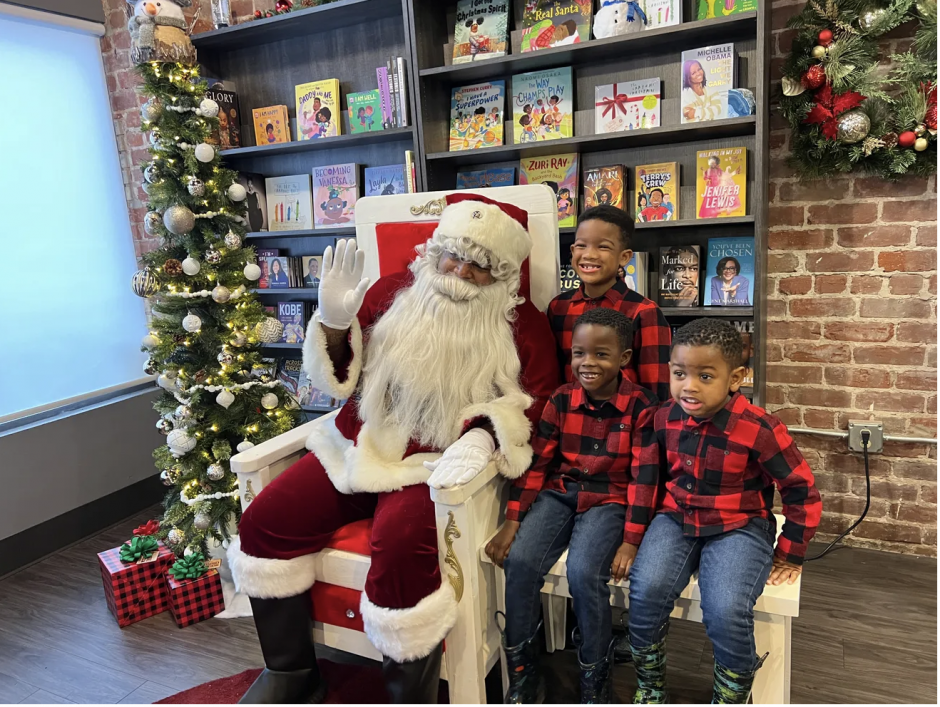Men who dress up as Black Santa Claus spread joy, diversity and inclusion for the holidays
12.21.22
As Santa Claus jingled up the steps to the Richardson family’s suburban Atlanta home on a chilly evening, two eager little faces appeared behind the opened door to greet him.
A jovial “Merry Christmas!” emerged from the white beard of Andre Parker, a professional Black Santa, as a boy and girl of the same complexion screamed with excitement in their pajamas.
Black Santas such as Santa Andre, as he’s known to children, are growing in popularity amid a rise in diversity and representation among traditional holiday characters.
“Within the Santa community, fewer than 3% of professional Santas are of ethnic origins, and (I) wanted to fill that void,” Parker, a former U.S. Marine and public safety chief, told USA TODAY.
Growing up in Alabama, Parker said, he had no exposure to Black Santas.
“I don’t remember seeing any on TV. It was the traditional white Santas in the red suits, and even on the old Claymation TV shows and the cartoons, (Santas) were all white,” said Parker, who started his journey as a Black Santa in July.
‘Trying to make sure kids are seeing the things we didn’t’
Chris Kennedy, a Black Santa in Little Rock, Arkansas, who made headlines in 2020 after receiving a racist anonymous note about his yard’s diverse Christmas decorations, also didn’t recall seeing Santas of color as a child in Texas.
“There was no representation there,” said Kennedy, who is featured in HBO Max’s 2022 documentary “Santa Camp” as the sole Black Santa.
Kennedy wanted a different upbringing for his 6-year-old daughter, Emily.
“I wanted her to be able to fully experience being a kid and all the things that come with that, which includes Santa and the Easter Bunny,” Kennedy told USA TODAY. “We’re trying to make sure kids and families are seeing the things we didn’t grow up seeing so they can pass that on to their kids.”
In California at Black-owned Underground Books in Sacramento, Black Santa made an appearance at educational nonprofit group St. HOPE’s “Christmas in Oak Park” holiday event this month.
The cheery brown face behind the white beard shows children how Santa can be reflected across all cultures, said St. HOPE’s CEO, Cassandra Jennings.
“We always say ‘If you see it, then you can be it,’” Jennings told USA TODAY. “If they can see that Santa is Black and reflects much of the population in this community, across the country and the world, it brings a different perspective. It gets rid of stereotypes.”
‘I’m Santa, they see nothing else’
Kennedy said that for the first four years of Emily’s life until 2020, he and his wife had no complaints from their Little Rock neighbors about the inflatable Black Santa Claus decorating their lawn.
“We also had a Black Lives Matter flag in our front yard, and I’m pretty sure that was what caused whomever wrote us the letter asking us to remove our decorations,” he said.
Not one to back down, Kennedy, who recently became a professional Black Santa, has decorated his yard two years after the incident with a 15-foot-tall inflatable Black Santa.
Parker, who attends public events and makes home visits as Santas, says he has been welcomed in his community with open arms with the exception of one negative comment.
“We were doing promotional photos, and an adult walked by and said: ‘Oh, I guess Santa’s Black now. I’m scared,’” Parker said.
His wife overheard the comment. “‘Well, I guess they didn’t hear me,’ (the passerby said), and my wife was like, ‘We heard you – you’re just rude,’” Parker said.
Despite the negative moments, both Santas say their experiences with families and children of all backgrounds have been nothing short of joyful.
“It’s amazing. They run up and you know, I’m Santa, that’s it,” Parker said. “They see nothing else.”
As a woman raised in the segregated South, Jennings said, the holiday season’s theme of kindness and giving wouldn’t be complete without factoring in inclusivity.
“If not, we still have work to do,” Jennings said. “We need to understand that inclusiveness, tolerance and love for one another is what’s going to make our society a better place, and if (we’re not there yet), this is the time to provide understanding for those who might not be there yet.”

